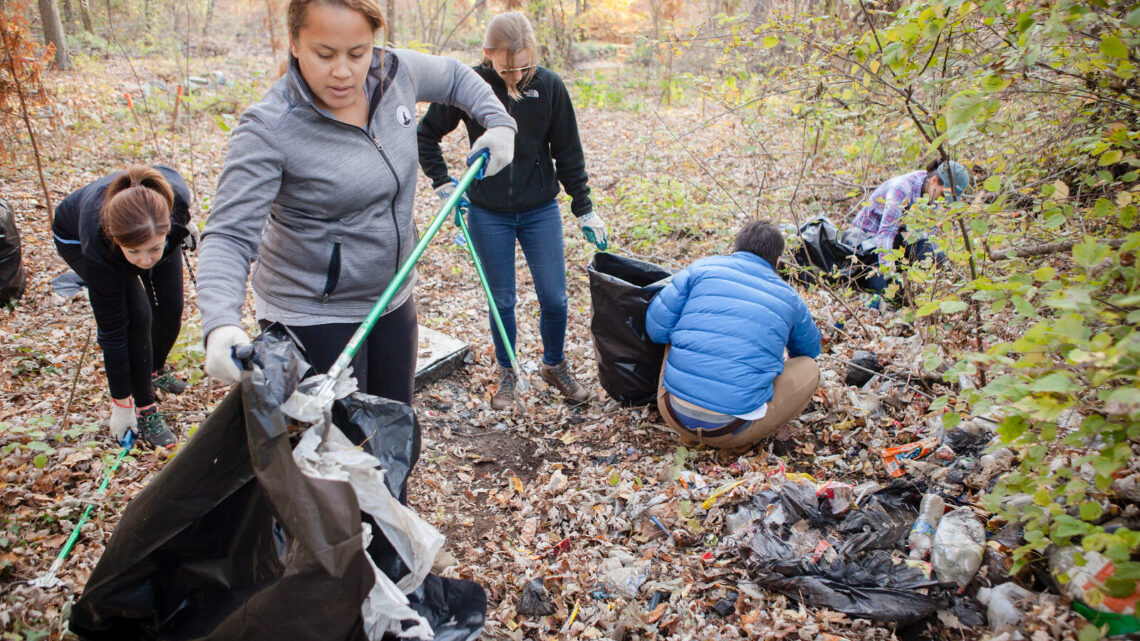Clean-up Events

Most people in the Chesapeake Bay watershed never mean to litter, but 5% sometimes, usually or always litter. With a population around 18.4 million, that amounts to 920,000 people that admit to littering and that wouldn’t include accidental littering from sources like overflowing trash bins. This can add up quickly! In 2020, just in Baltimore City, 256 tons of litter were collected and prevented from reaching the inner harbor.
Litter, like that collected in Baltimore City, can make its way to storm drains and waterways. This litter can introduce harmful chemicals into the habitat, be ingested by wildlife, alter habitats by clogging waterways or shading underwater plants, and be a danger to people. Overtime, litter can have a dramatic impact on the environment.
Connecting to Issue Investigation
Clean-up events can be an engaging and fulfilling solution because you see the results immediately. If this solution is to follow investigations, make sure there is a clear, evidence-based connection so students can understand the cause and effect relationship. Investigations that may lead to clean-up events include, but are not limited to: finding microplastics in water or sand samples, researching how trash can negatively impact animals, or surveying the communities’ understanding of their personal impact on the environment. If students choose a clean-up event solution, challenge them to also consider the root cause of the litter. The clean-up event can remove the problem for the moment but what can they do to prevent it?
For those working towards green school awards, this action can help advance environmental and sustainability education by helping students understand the human impact on the environment and learning how they can make a difference. If the clean-up event happens on school grounds, this action can reduce the school’s environmental impact.
Facilitating Student Action
Students should continue to have opportunities to share ideas and opinions throughout the process of identifying, planning, and implementing action. Listed here are just a few ways students can stay engaged while working on this solution—but there are many more! The complexity of each activity/task can be adjusted for each grade level.
Protect - after a clean-up event, students can brainstorm how to protect the area from filling up with litter again. This action can include managing trash better with more trash cans, adding can lids, or researching solar-powered trash compactors.
Restore - a clean-up event is a form of restoration. Students can get involved in organizing the event by recruiting volunteers from the community and other classes.
Educate - students can educate others on how litter makes its way to waterways and how litter can negatively affect the environment. This can include stenciling messages on storm drains.
Advocate - students can advocate local and state governments to reduce the amount of single-use items that commonly turn into litter like plastic bags.
Monitor - students can monitor the quantity, location, and types of litter found in their community. They can also weigh the amount of trash collected and the amount they later recycled. This data can inform next steps like installing trash bins, starting an education campaign, or speaking with businesses that may be the source for the litter.
Share and Celebrate - students can share their work with the school community by recruiting volunteers to join their clean-up event, giving presentations, creating displays, or writing and delivering morning announcements. Students can also write articles, press releases or invite reporters from the school paper and the local newspaper.
Clean-up Events Resources
- Many of the resources for organizing a clean-up event are focused on streams, the Chesapeake Bay, or the ocean because that is where litter often accumulates. If you are interested in a clean-up event in a different type of habitat like a schoolyard or forest, these guides are still helpful in providing practical information on organizing and preparing for a clean-up event.
The Stream Cleanup Handbook from the Chesapeake Bay Foundation is designed for students and can easily translate into other types of habitats.
The Marine Debris Toolkit from the National Oceanic and Atmospheric Administration (NOAA) is a comprehensive guide that helps you organize a beach clean-up and how to turn collected litter into data.
A great way to get more people volunteering and learning about your clean-up event is to connect with an established campaign. Check out Project Clean Stream from the Alliance for the Chesapeake Bay, the Ocean Conservancy’s International Coastal Cleanup, and Clean the Bay Day in Virginia.
